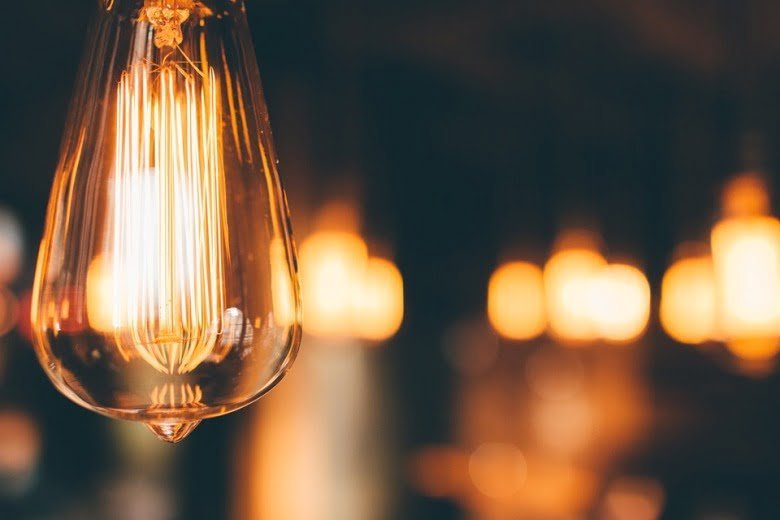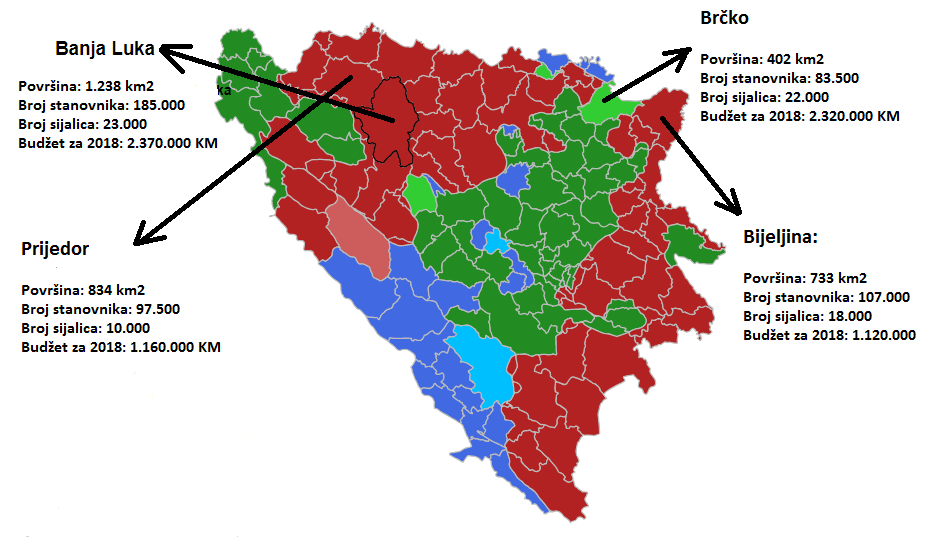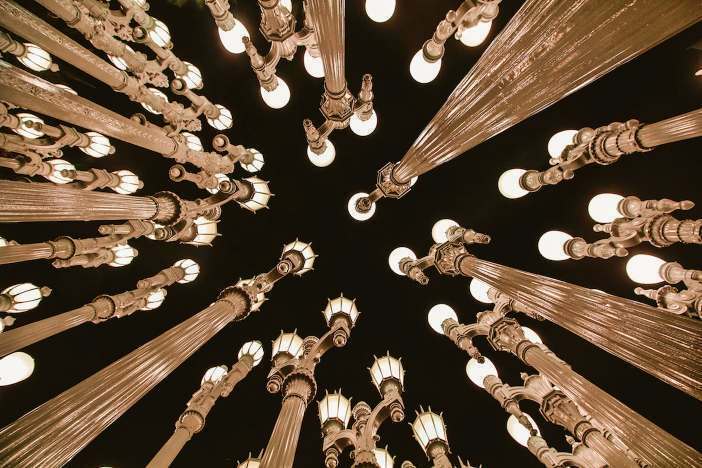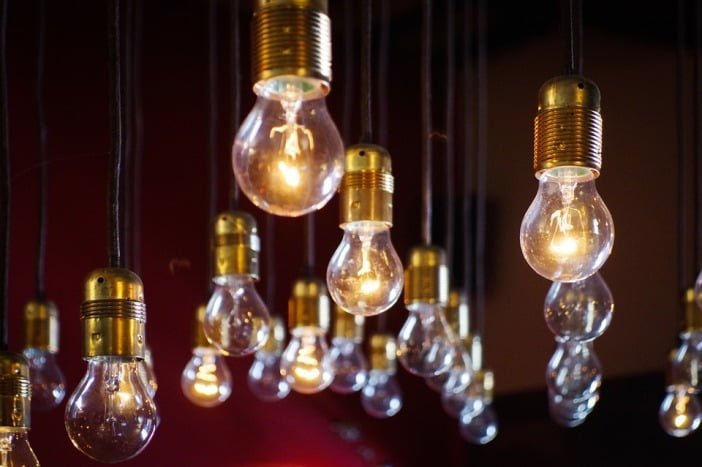Record holder in terms of public lighting: Brcko shines like Las Vegas!
Brcko District is the absolute champion in spending budget money on public lighting! With almost 22,000 light bulbs installed on the territory of this municipality, and 2,320,000...

Brcko District is the absolute champion in spending budget money on public lighting! With almost 22,000 light bulbs installed on the territory of this municipality, and 2,320,000 KM per year for maintenance and electricity of public lighting, we come to a simple calculation of 6,356 KM per day, as much as Brcko gives for these purposes.
Writes: Vanja Stokić
This amount includes the construction of new lighting, maintenance of the old one, as well as the electricity used for its operation.
“It’s crazy!” We shine like Las Vegas! Before each election, new lighting is installed , without any need or budget. Even some rural roads are illuminated, such as access to forests “, says our source from the Government of the Brčko District, who wished to remain anonymous.
The head of the department for communal affairs in the Brčko Government, Zoran Bulatović, pointed out to the media that as much as half of the installed light bulbs are LED light bulbs, while the rest will be replaced soon.
“The introduction of energy-saving lighting is one of the priorities , considering that about two million marks are allocated from the budget annually for the maintenance of this system and the electricity consumed,” he said.
However, the Government of the Brčko District could not explain to us the need for such a large number of light bulbs , although it also includes lighting on main and local roads. Ethics officer Alma Burić Bašić said that the maintenance of public lighting is entrusted to the public company “Komunalno” from Brčko. At the annual level, that amount is 200,000 KM.
“According to the Law on Communal Activities, JP ‘Komunalno’ is in charge of maintaining public lighting. At the moment, there are almost 22,000 light bulbs on the territory of Brcko, “Buric Basic told eTrafika briefly, unable to justify their number .
Bigger city, and smaller allocations
According to the latest census, 83,500 citizens live on 402 square kilometers of Brcko . For the sake of comparison, there are 97,500 inhabitants in Prijedor on 834 square kilometers , while 10,000 light bulbs have been installed, twice less than in the Brcko District . This item in the budget of the City of Prijedor for 2018. year amounts to 1,160,000 KM, half of the budget of Brcko .
“In the past period, activities were carried out to save electricity in a way that approached the physical shutdown of a number of lighting fixtures that illuminate public areas, the exclusion of illegally installed lighting fixtures, such as lighting fixtures that do not illuminate public areas, illegal connections of other consumers to public lighting, then replacing classic LED bulbs where technically feasible lighting. LED bulbs are represented by 10% “, said Milorad Vujmilović, acting director for eTrafika Head of the Department for Communal Affairs and Environmental Protection of the City of Prijedor.
The situation is similar in Bijeljina. Although it is much larger in area and population (733 km2 and 107,000 inhabitants), less public lighting has been installed in this city than in Brčko – 18,000 light bulbs . For these purposes, twice less money is allocated annually from the budget than in Brcko , about 1,120,000 KM.
“By installing timers , which enable the extinguishing of light bulbs at midnight, we have reduced real consumption and since then we have saved about two million marks ,” said Tomica Stojanovic from the Department of Housing and Communal Affairs and Environmental Protection of Bijeljina in previous press statements.
A light bulb almost like in Banja Luka
Although Banja Luka is three times larger than Brcko (1,238 square kilometers) and has 100,000 more inhabitants (185,000 according to the last census), Brcko is almost equal to Banja Luka in this budget line . Namely, Banja Luka during 2018. allocated 2,370,000 KM for public lighting, while that figure for Brcko is only 50,000 KM less. Banja Luka is lit by about 23,000 light bulbs, which is only one thousand more than in Brcko.
“Currently, the feasibility strategy for the transition to LED lighting is very important to us, for which we have already provided money. The goal is to expand the lighting network, especially in suburban settlements, to establish a unique management system and switch to LED light bulbs, “said the spokesman of the City of Banja Luka, Milenko Šajić.
Possible energy savings of 30%
Five years ago, Marko Ikić, Milomir Šoja and Slobodan Lubura from the Faculty of Electrical Engineering in East Sarajevo warned about excessive budget allocations for public lighting, as well as its inefficiency . In their work “Saving electricity in the public lighting system”, they state that research by eminent world institutes has shown that the application of modern technologies can save about 30% of electricity . They also state that public lighting is an important area for the application of methods of more efficient use of electricity, especially if we take into account that it participates in the total consumption with more than 20 percent.
“In most units of local government and self-government in the Republika Srpska, public lighting appears as a large (inefficient) consumer of electricity and a significant item in the budget. “Serious estimates and research show that some municipalities in Republika Srpska, depending on the size and degree of urbanization, pay annually for electricity consumed by public lighting in the amount of several hundred thousand to several million KM,” they said, warning that replacements of old light bulbs are not performed adequately .
Namely, although some mercury bulbs have been replaced by sodium ones, which are more efficient, the obtained effects are far from possible , if modern technology were applied.
“For example, the efficiency of the new generation of light bulbs is higher by 15-20% compared to classic ones, while the efficiency of lamps has increased from 70% to 88%, which leads to a cumulative reduction of electricity consumption of about 35%, with the same light effect . However, the most modern solutions based on compact fluorescent bulbs (CFL) and light-emitting diodes (LEDs) promise a reduction in electricity consumption of about 75% “, they explain from the Faculty of Electrical Engineering.
In other words, if new, more efficient lighting systems were designed and the old ones were replaced with adequate ones, municipalities and the entire RS would feel a significant relief from their budgets . In addition to the material, it should be reminded of the environmental benefits , as well as compliance with EU standards .
“More than 30% of every system relies on lighting lamps whose lifespan has long passed and whose lighting and energy characteristics more do not meet the requirements prescribed by the standards. In short, this means that for the same lighting results, it is necessary to place significantly higher lamp power in the lamp than is necessary when it comes to newer lamp technologies, “they point out.
Devices currently used to turn ravets on and off are not considered effective, as their characteristics change under different operating conditions, resulting in unreliable light level information . In order to achieve a more efficient system and budget savings, they suggest proper adjustment of the automatic on / off lighting, programmed switching off of certain phases, replacement of obsolete CFL bulbs and LED bodies, and continuous regulation of light intensity .
“Thus, one hour of work longer than the necessary time increases the cost of electricity by 5-10%, and reduces the lifespan of the bulb by 2-5% , depending on the time of year. The effects of savings are reflected, most often, through the proper adjustment of existing lighting that is turned on before the optimal time and that is turned off after it. Analyzing the literature and reports of realized world projects in terms of increasing energy efficiency and savings in public lighting systems, it can be concluded that modern lighting is mostly based on LED technology whose characteristics are much better than lighting fixtures whose technological solutions are based on mercury and sodium. they conclude.
The story was published as part of the USAID-funded IMEP Press Support Program
Rekorder po pitanju javne rasvjete: Brčko svijetli kao Las Vegas!
Get involved
Stay tuned
Subscribe to our newsletter and receive periodic notifications about our, announcements, calls and activities via email.
Don't miss it
If you want to receive our announcements immediately after the publication, leave your e-mail address in the field below.






